As a child, I was enraptured by my late grandparents and parents’ tales of the vibrant festivities they experienced during Holi, the festival of colors. They spoke fondly of the natural hues derived from Butea monosperma flowers, also known as Tesu or Palash, in my mother tongue.
Cultural significance of Butea monosperma
Butea monosperma, holds significant cultural, ecological, and medicinal value in India. It is associated with festivals like Holi and symbolises energy and the arrival of spring. The tree’s deep roots prevent soil erosion, while its flowers are used for natural dyes. In Ayurvedic medicine, it is used for its medicinal properties. Efforts to conserve and plant Butea monosperma contributes to preserving traditions, biodiversity, and the country’s heritage. Overall, it plays a vital role in Indian culture, ecology, and traditional practices.
Decades later, while exploring my own artistic and creative path, I stumbled upon the very tree that had intrigued me for so long during a visit to Auroville in 2019. Witnessing their full bloom ignited a spark within me. Collecting the precious flowers, I explored and documented my findings in a blog post.
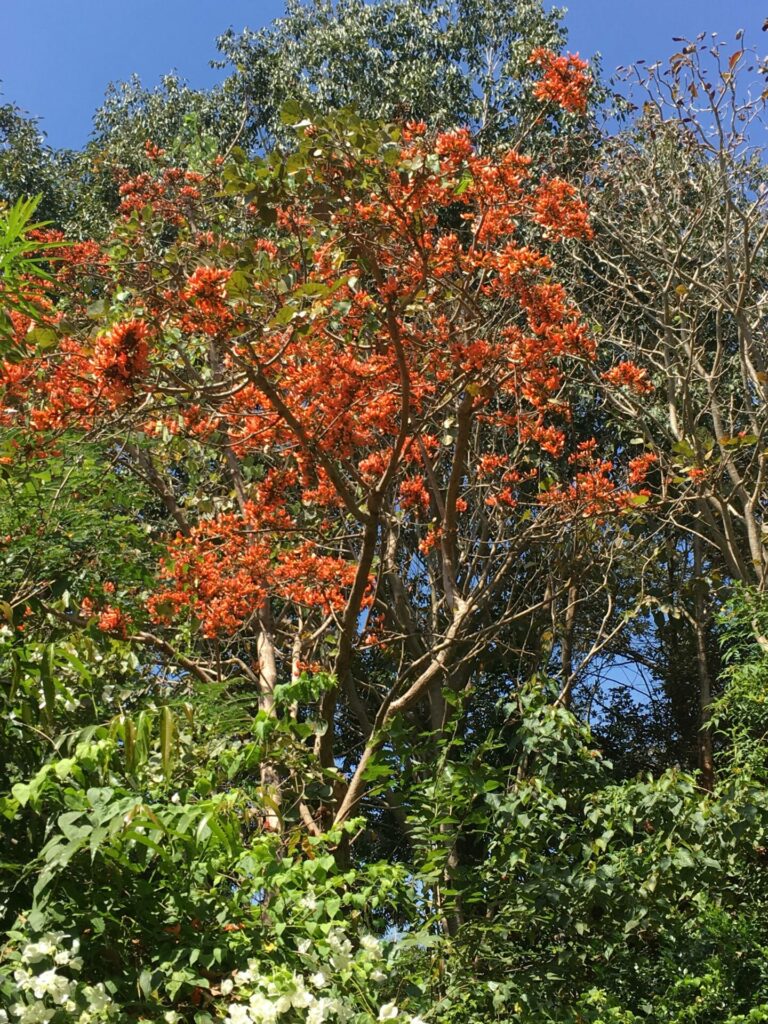
Flame of Forest Tree in Bloom, February 2019; Auroville, India
During a recent visit to my homeland, we were graciously invited to a friend’s organic farm nestled in a secluded, forested region, about 3hrs hours drive away from bustling Bombay (Mumbai) in the Western Ghats, also known as the Sahyadri mountain range, a UNESCO world heritage spot.

Western ghats, April 2023, India
The scorching heat and arid terrain created an aura of enchantment. Amidst this remarkable setting, I discovered the Flame of the Forest tree on the farm, though its flowering season had waned, leaving behind desiccated petals strewn upon the crimson earth.
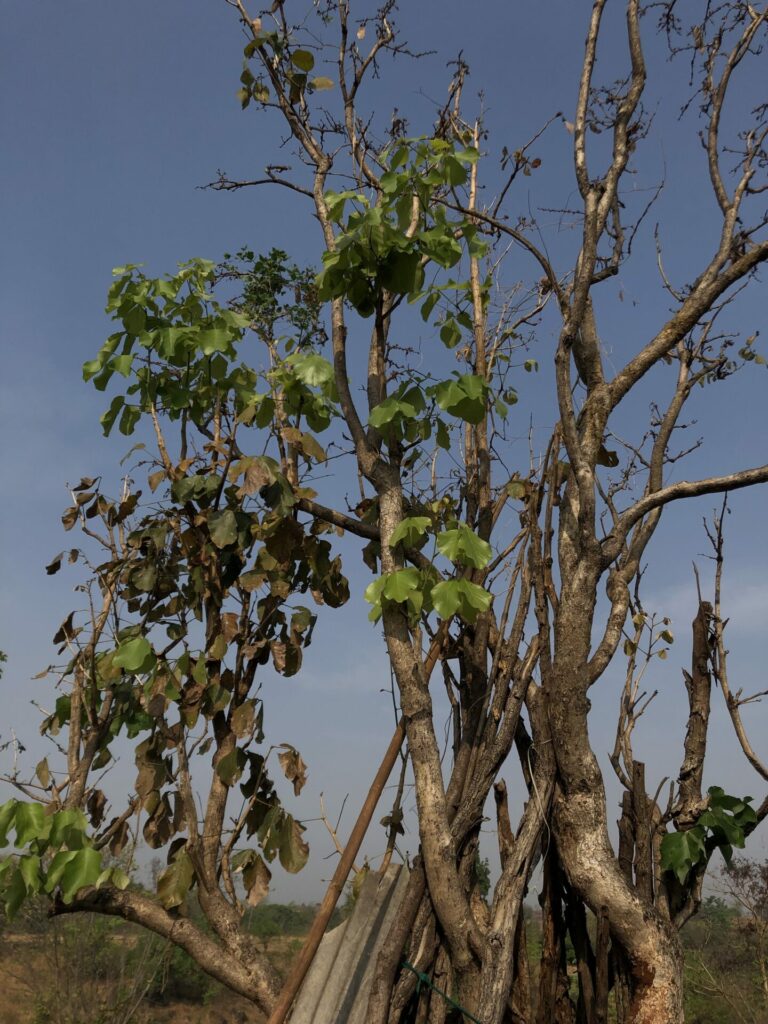
Butea monosperma tree, Kasara, India
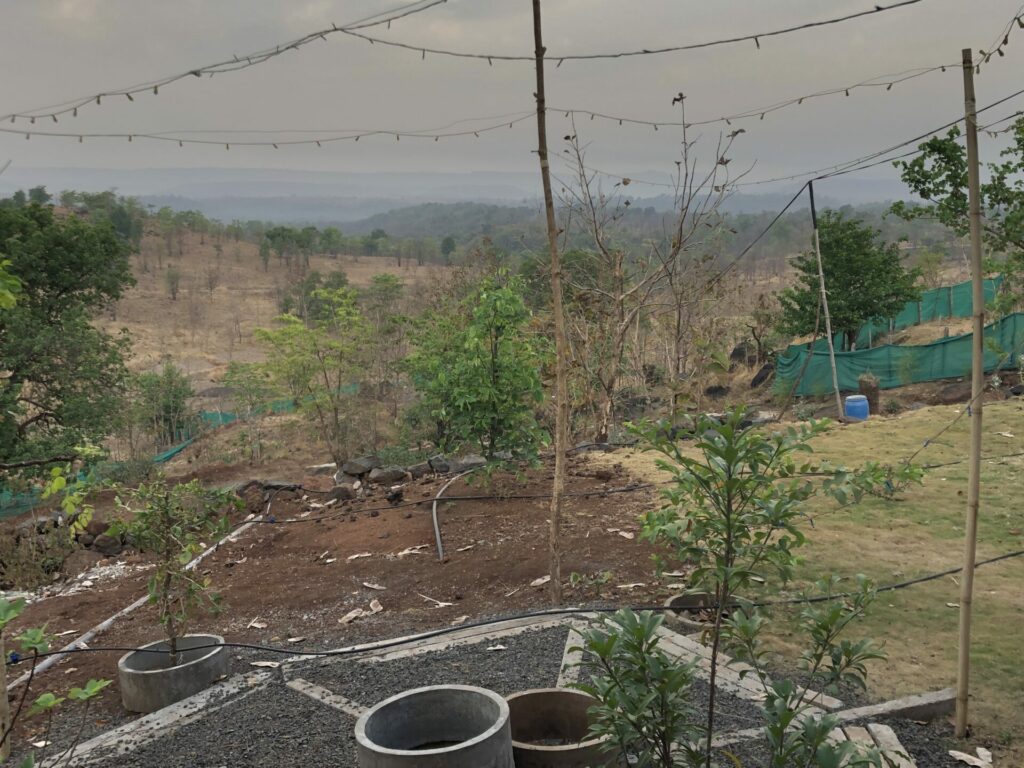
Nirvaan, organic farm, Kasara, India
I gathered a handful of these delicate remnants, carrying them home with a newfound purpose. This time, my intention extended beyond creating inks, as I yearned to extract a long-lasting lake pigment capable of transforming into paints and inks, preserving the essence of this captivating natural color.
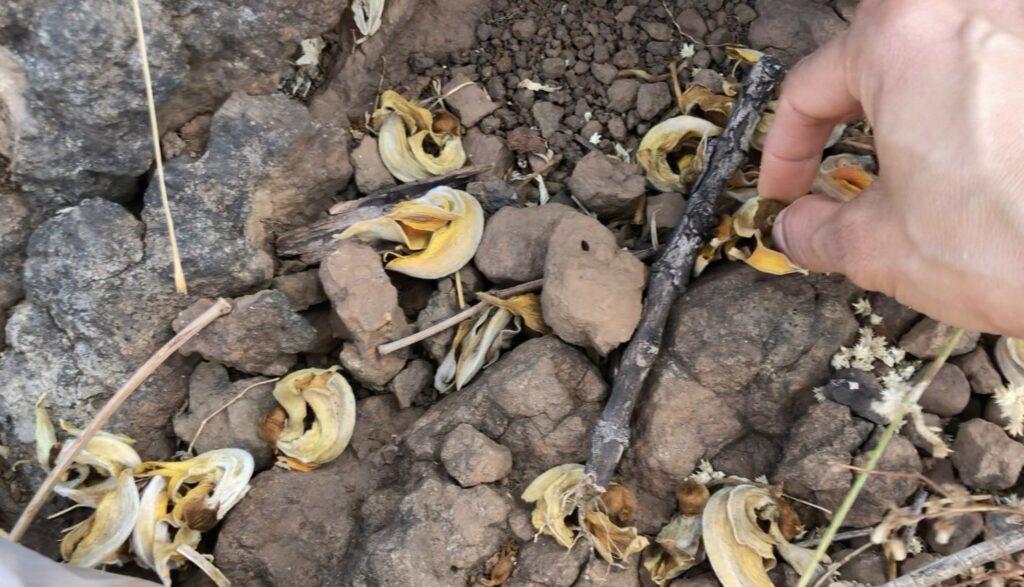
Collecting the dried flowers
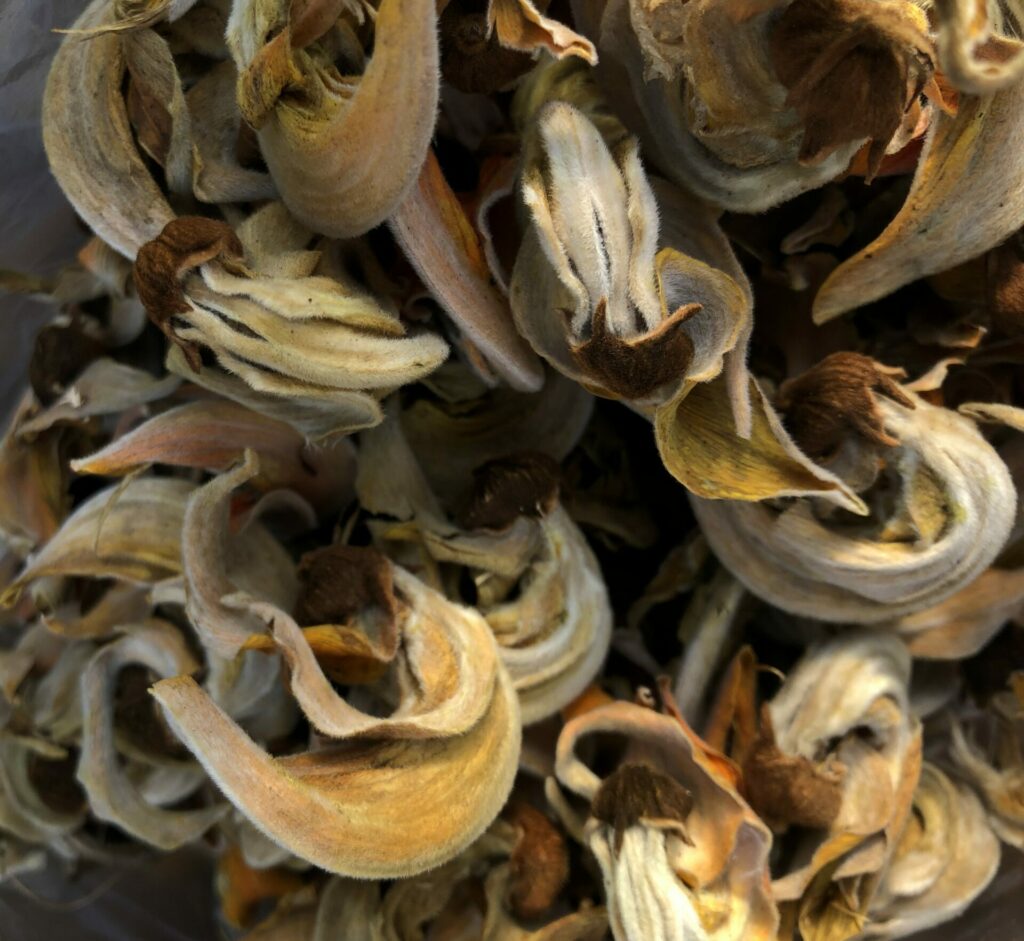
Foraged Tesu (Butea monosperma) flowers
Pigments in Butea monosperma
Butea monosperma flower contains a diverse array of pigments that contribute to its vibrant and captivating colors, ranging from intense yellows to orange and red hues. The primary pigments found in Butea monosperma flowers are flavonoids, anthocyanins, and carotenoids.
- Flavonoids: Butea monosperma flowers contain flavonoid pigments such as butein and isobutein. These flavonoids are responsible for the intense yellow and orange hues observed in the flowers.
- Anthocyanins: Anthocyanin pigments, such as pelargonidin and cyanidin, give the flowers their vivid red and orange-red colors. These water-soluble pigments are responsible for the striking color transformation during maturation of the flowers.
- Carotenoids: Carotenoid pigments contribute to the yellow and orange colors seen in Butea monosperma. The main carotenoids found in the flowers are lutein and zeaxanthin.
Extracting the lake pigment from Butea monosperma
Upon my return to Austria, I proceeded with the process of extracting lake pigment from the desiccated Butea monosperma flowers. To my astonishment, the resulting dye exhibited an unexpected intensity of color. Initially, I steeped the flowers in hot water for approximately 7-8 hours, but I decided to let the dye pot sit overnight for further saturation. To ensure a high-quality pigment, I carefully filtered the dye solution through a muslin cloth, eliminating any fine organic and solid particles.
Next, I introduced an alkali and acid, carefully adjusting their quantities to achieve a neutral pH. As the pH reached equilibrium, the pigment began to separate, forming a distinct layer. I patiently allowed the pigment to settle before proceeding to filter and dry it at room temperature.
Through a series of extractions, I maximised the potential of the Butea monosperma flowers by utilizing them three times to obtain varying hues of brilliant orange. Each dye solution exhibited a distinct intensity, resulting in a spectrum of captivating shades.
The remarkable versatility of the Butea monosperma flowers allowed me to unlock the full range of their vibrant orange pigments, creating a visual feast of colors for my artistic endeavors.
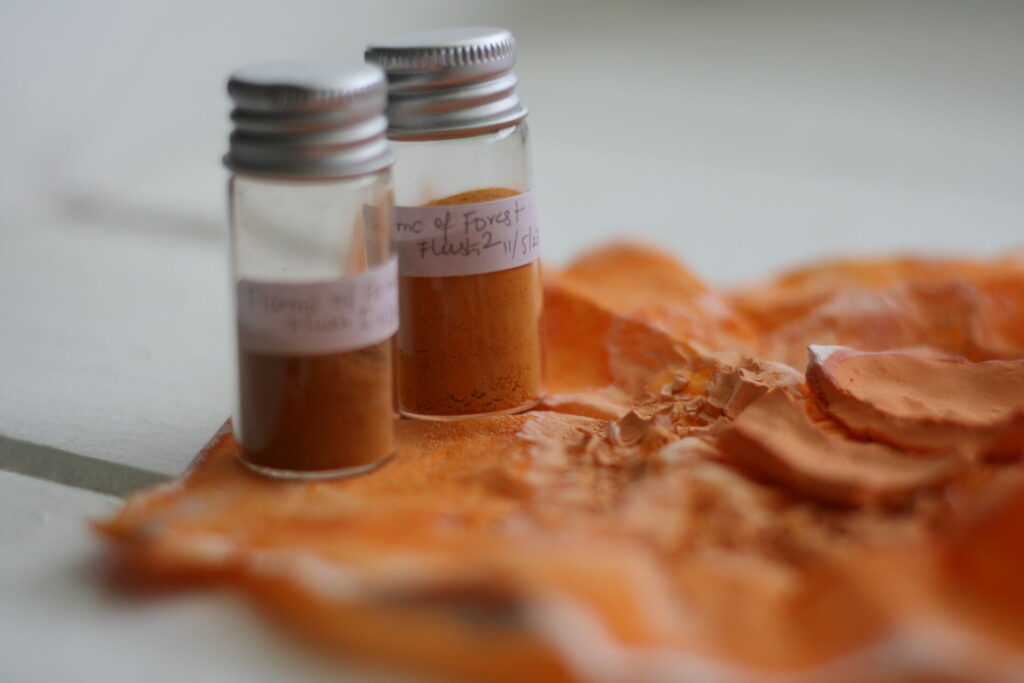
Compatibility of lake pigment from Butea monosperma flowers
The orange pigment obtained from Butea monosperma flowers can be easily mixed with other natural colorants to create a wide range of hues and shades. It blends well with yellows, blues, reds, and browns, allowing you to achieve desired color variations and gradients.
In conclusion, Butea monosperma flowers reveal nature’s exquisite artistry through their vibrant hues and rich pigments. From intense oranges to fiery reds, they ignite our senses and ignite our creativity. With deep cultural significance and healing properties, these blossoms symbolize our profound connection to the natural world.
If you want to learn more about the process of making a wide range of lake pigments from frugal resources then enrol in my online course Botanical Lake Pigments or subscribe to my sporadic newsletter to get inspired.
References:
1. Chokchaisiri R, Suaisom C, Sriphota S, Chindaduang A, Chuprajob T, Suksamrarn A. Bioactive flavonoids of the flowers of Butea monosperma. Chem Pharm Bull (Tokyo). 2009 Apr;57(4):428-32. doi: 10.1248/cpb.57.428. PMID: 19336944.
https://pubmed.ncbi.nlm.nih.gov/19336944/
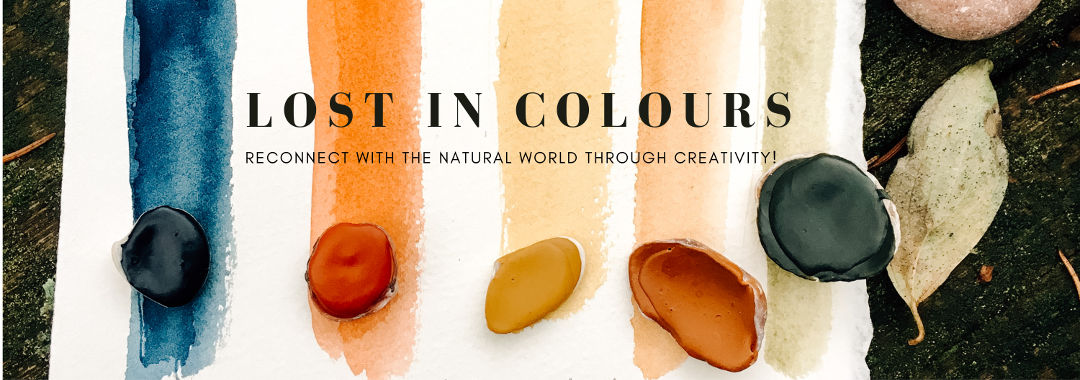
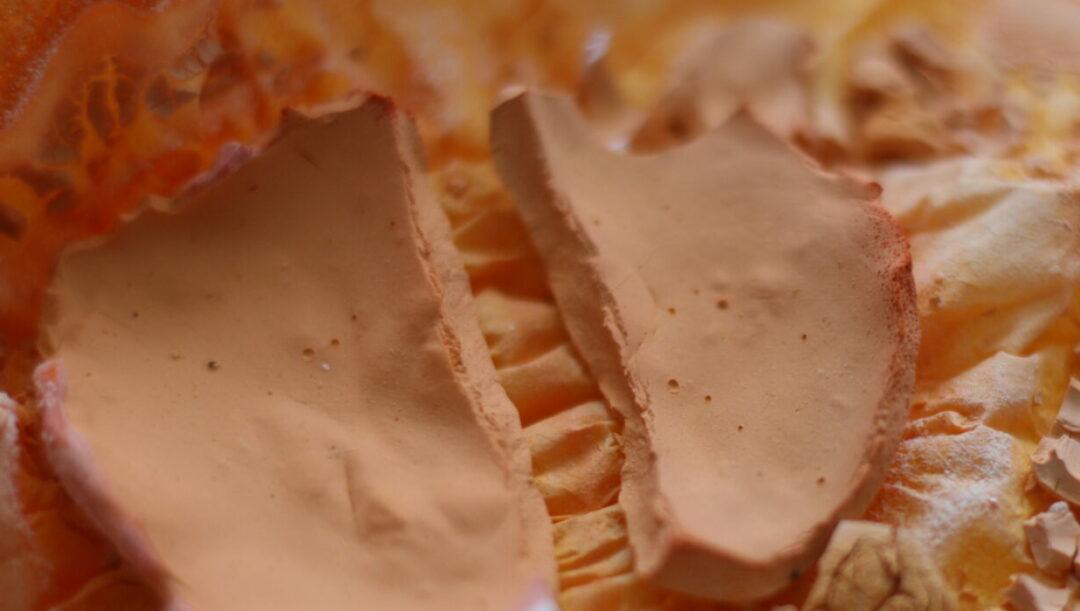
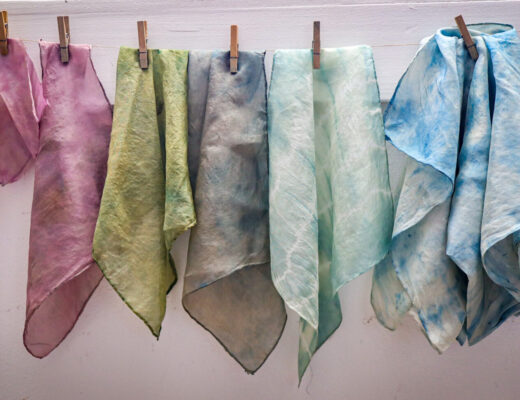
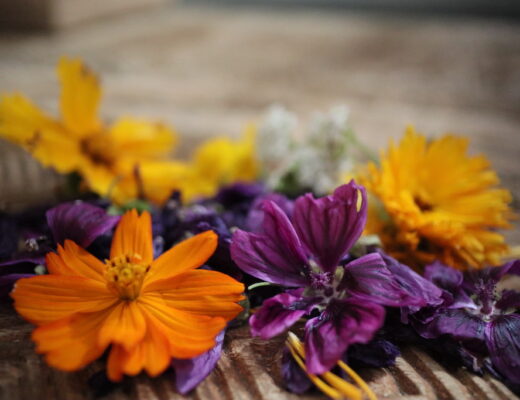

No Comments